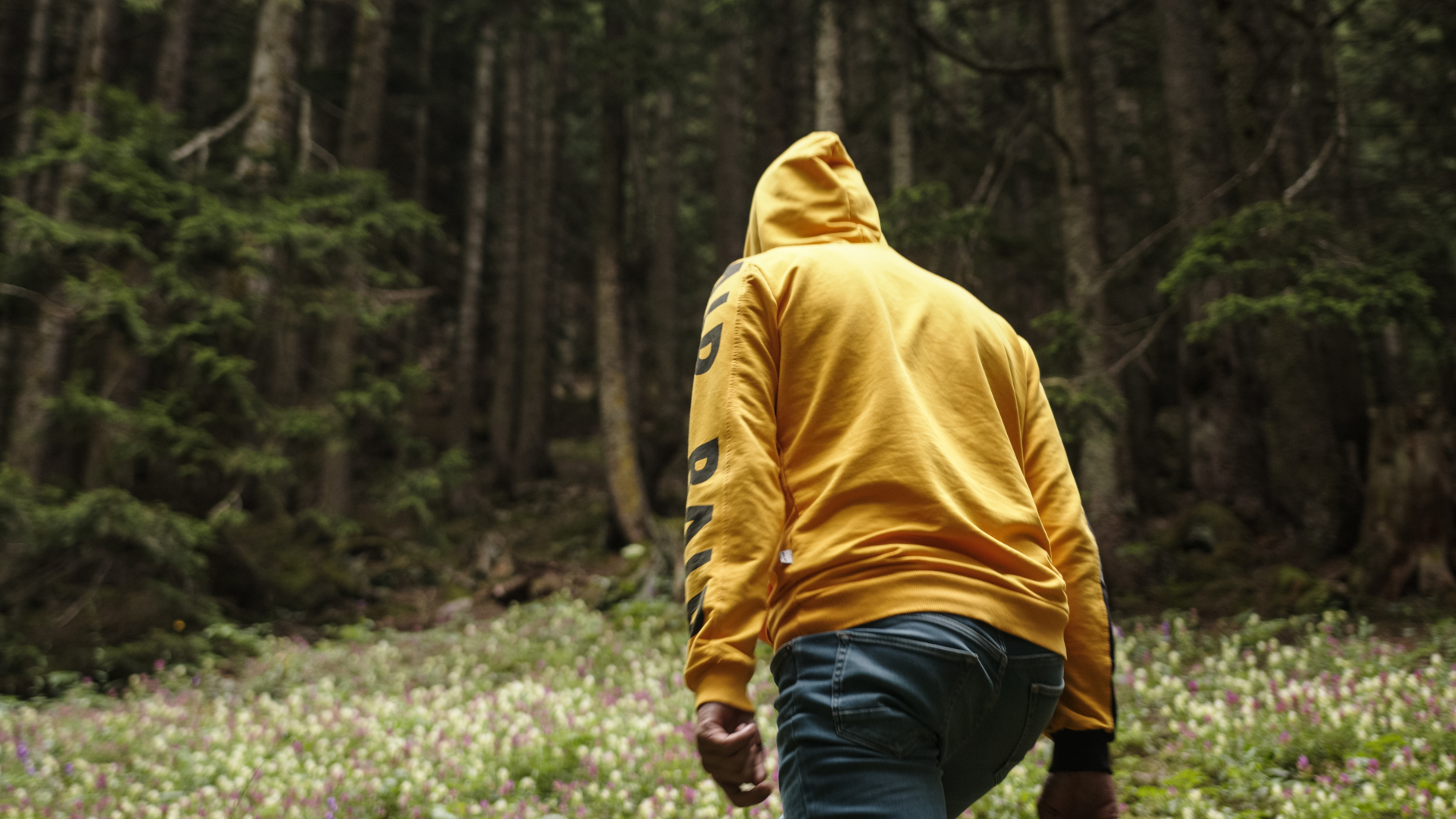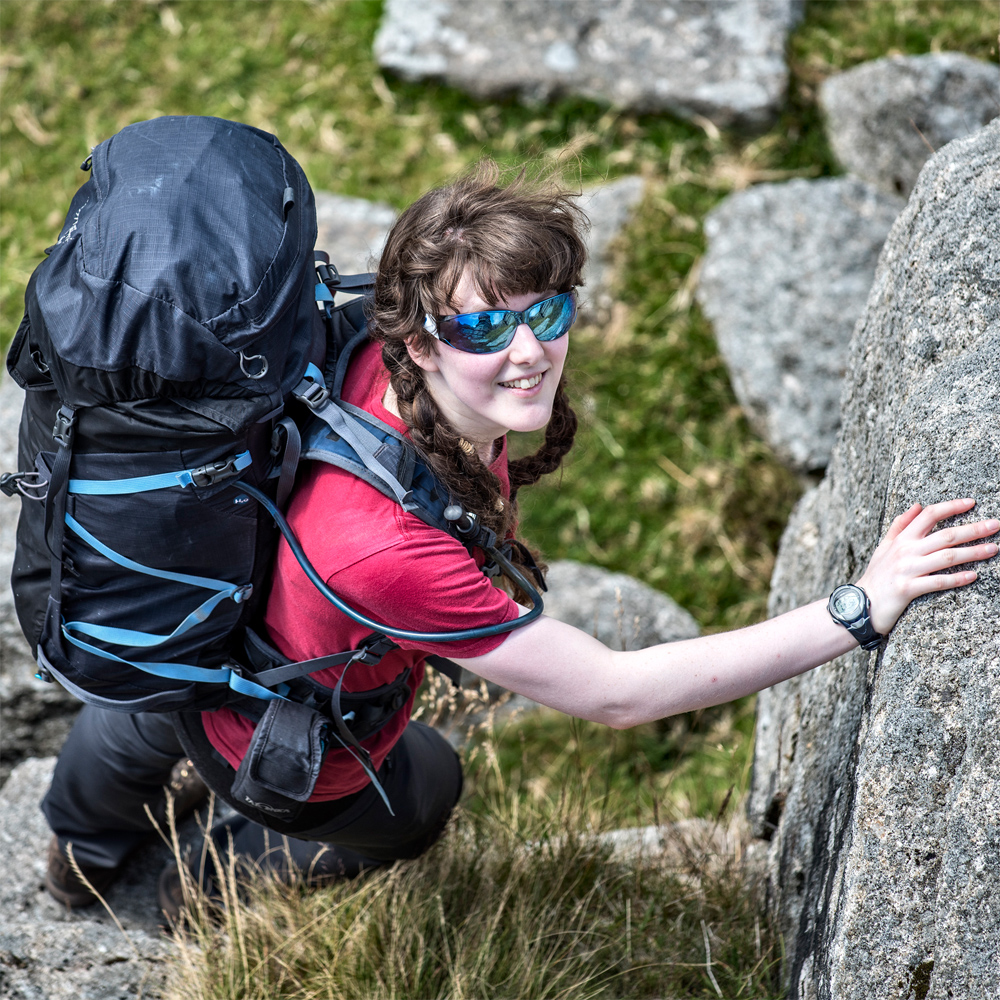Why is cotton bad for hiking? Our experts reveal all
We explain why cotton is bad for hiking and reveal what the very best fabrics are for taking on the trails

Why is cotton bad for hiking? As one of the world's most popular fabrics, it may seem surprising that it's such a no-no for the backcountry trails. But it's true, cotton clothes are firmly ensconced on the naughty list alongside hiking in jeans, hiking in Vans and, to a slightly lesser extent, hiking in Doc Martens.
We can absolutely promise you that we're not being gear snobs. We'd love to be able to sport our stylish cottons on the trail and in the bar afterwards. After all, cotton has lots of great benefits – it's comfortable, it isn't clingy, and it's hypoallergenic. Unfortunately, it's just not up to the task. Why? Let two of our gear experts explain all...
Why is cotton bad for hiking?
The reason that cotton is bad for hiking – and basically any outdoor activity, actually – is all to do with the science of staying warm. You see, cotton is very good at keeping hold of water.
Which is fine, except when you’re in an environment where there’s a lot of water. For example on a miserable, wet day on the hills when it’s raining in all directions. Or on a warm humid day when you’re sweating buckets and getting wet from the inside out. Or basically any time you're sweating.
Cotton soaks up all that water like a sponge, and you're clothing becomes heavy, clammy and cold, especially if the weather is cool. It has no moisture wicking capabilities, so moisture from your sweat is unable to escape. Finally, it's also very slow drying, meaning you'll be suffering from wet and cold long after it stops raining.
So, the main reasons why cotton is bad for hiking are that:
- It soaks up water easily and becomes heavier
- It's very slow drying, unlike many performance fabrics
- When it's wet, it loses its ability to keep you warm
- It has no moisture wicking capabilities
Meet the experts

Emily is a passionate hiker and a Mountain Leader based in Dartmoor National Park in England's Southwest. It's a place known for its changeable weather, as is the case with all of Britain's uplands. She knows all too well the pitfalls of clothing that's not up to the task.

Based on the cusp of the bonnie Scottish Highlands, if Julia didn't go hiking when there was a chance of getting a bit wet, she'd never go hiking. She's always got the appropriate kit and clothing for taking on the Scottish backcountry.
Today's best deals
Cotton clothing becomes heavier when wet
This one shouldn't take much explaining, as we're all aware that when something soaks in a load of water, it gets substantially heavier. Cotton takes in water like a sponge, markedly adding to its weight. The last thing you need when you're lugging a fully loaded daypack up a steep incline is your clothing made much heavier by a sudden downpour.
All the latest inspiration, tips and guides to help you plan your next Advnture!

Cotton does not dry as quickly as many other fabrics
Read reviews of decent base layers and you'll often see "quick drying" named as a pro. This is not the case with cotton, which takes an age to dry. This has a number of disadvantages: it'll mean your garment stays heavier, it won't keep you warm and moisture from sweat won't be able to escape.
If you want to prove it, it’s actually quite a fun activity – particularly if you’re teaching kids. Get a bucket of water and two equivalent T-shirts: one synthetic and one cotton. Dunk both T-shirts in the water, then hang them out to dry next to each other. After an hour or so, come back to compare how damp the clothes are. The difference will be obvious.
Cotton loses its ability to keep you warm when wet
When the cotton is completely wet it’s no longer keeping you warm. This might be fine if it’s a scorching hot day, but less good most other times. Considering it soaks up water like a sponge and backcountry trails can often not be the driest of places, this is a huge issue.
Cotton has no moisture wicking capabilities
Another downside is that cotton has no moisture wicking properties. This means it can’t move water (aka sweat) away from your skin into drier areas. If the weather is very cold or windy, you can get very cold by wearing cotton clothing. Particularly if you stop moving. Wet plus windchill is well on the way to hypothermia.

What are the best fabrics for hiking?
OK sure, people climbed most of the way up Everest in tweed jackets back in the day and lived to talk about it, but trust us, there are far more comfortable clothes nowadays, specifically designed for the outdoors. In fact, the best hiking pants, best hiking tops and best hiking socks these days are always made using breathable, moisture-wicking fabrics that transfer vapor away from your skin to keep you cool if you're sweating, dry quickly and still provide warmth when they get damp on cold days.
In fact, one of the best fabrics for hiking clothes is Merino wool, which you might think sounds too scratchy and hot for a warm day on the hill but is soft and helps you regulate your temperature. Another natural option is bamboo, which isn't quite as technical but very soft, or for more durable clothes, you can choose from synthetic fabrics such as polyester and nylon – just look for recycled options to help offset the environmental implications, or course. Sustainable hiking clothes are an essential in this day and age.
You might not look quite as cool on the trail as you thought you looked in your lumberjack shirt and jeans but hey, you'll live to tell the tale.
An adventure writer based on Dartmoor, England, Emily is an active member of Mountain Rescue and a summer Mountain Leader, but loves all things adventure – before her third birthday she had lived on three continents. Founder of Intrepid magazine, she works to help break stereotypes about women in the outdoors. Her expeditions have included walking all Dartmoor’s 119 tors in a single two-week outing, cycling to Switzerland and back, and riding the Rhine from source to sea.

